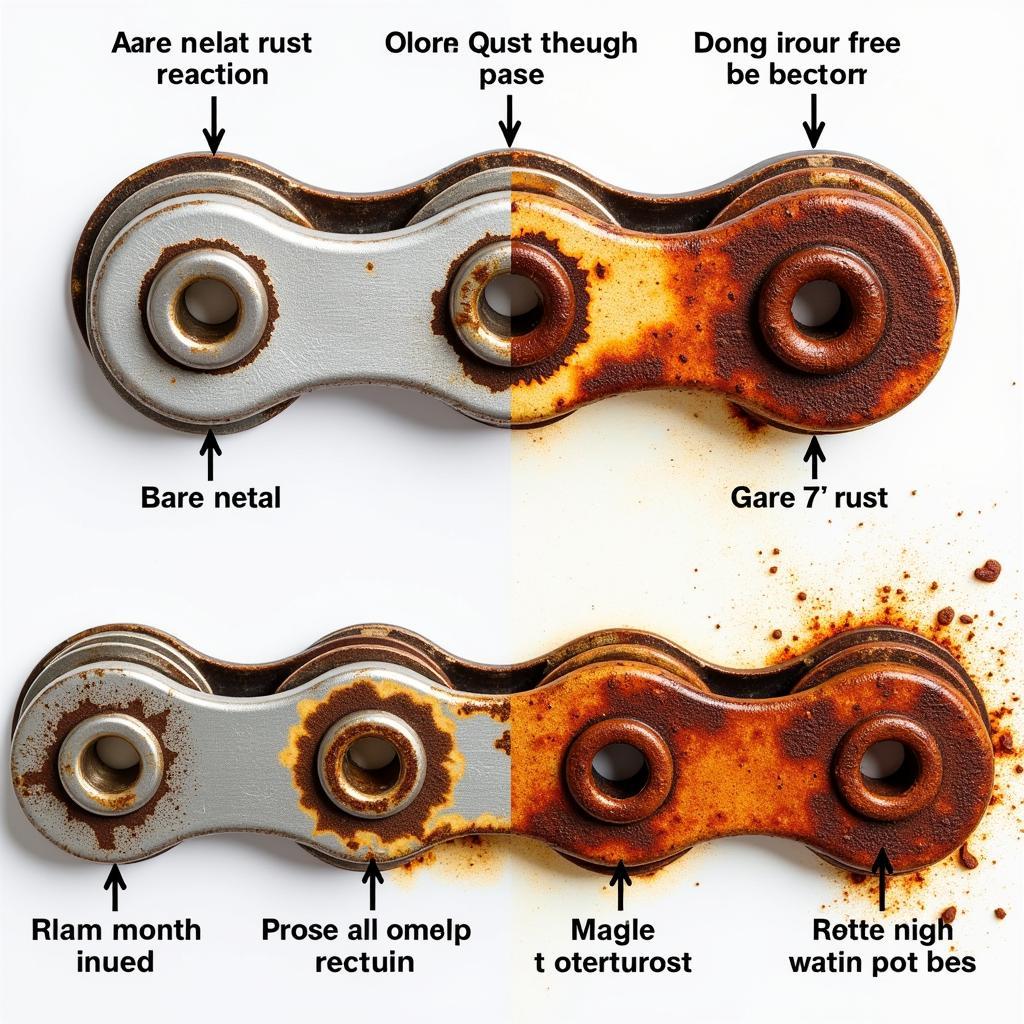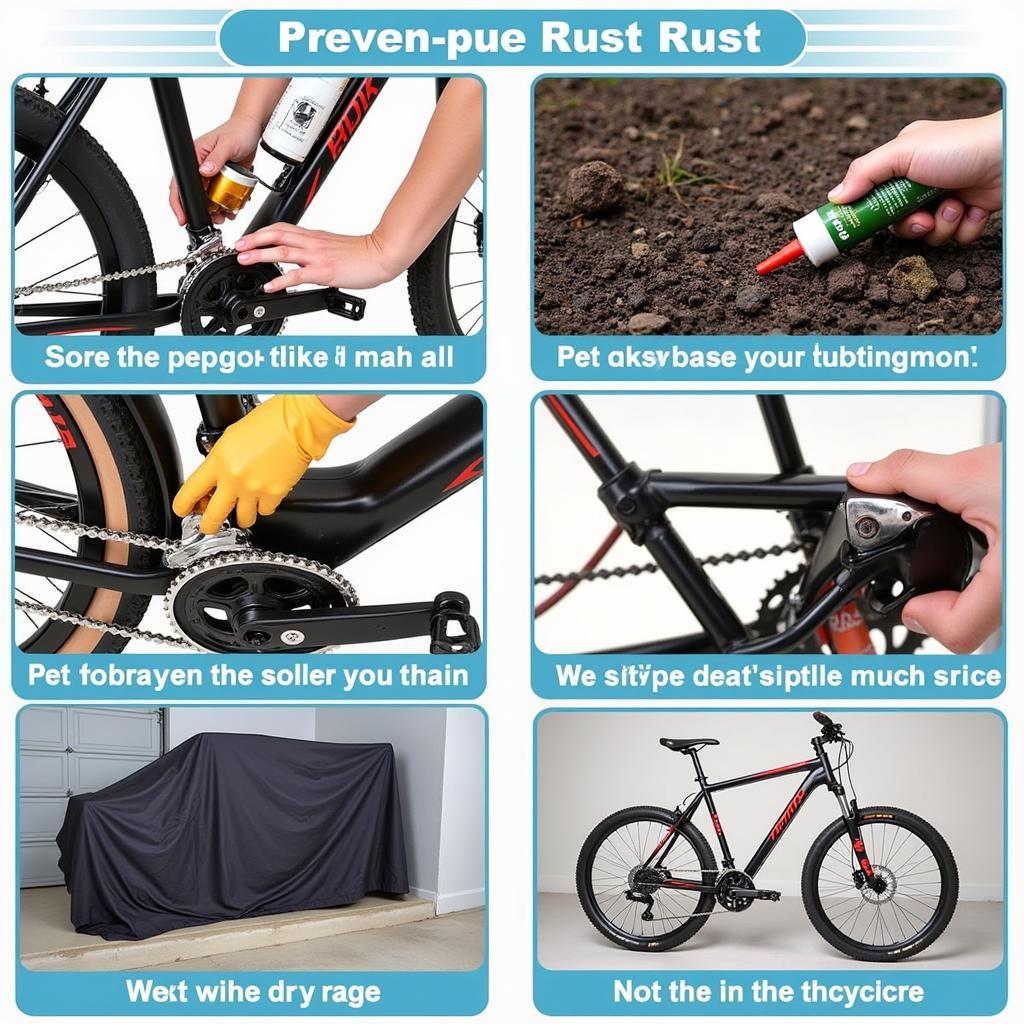A bicycle changes color as it rusts, transforming from gleaming silver or vibrant paint to a dull orange-brown. This transformation isn’t just cosmetic; it’s a chemical reaction that weakens the metal and can eventually compromise the bike’s structural integrity. Understanding the science behind rust and how to prevent it is key to keeping your bicycle looking its best and performing optimally for years to come.
Why Does a Bicycle Rust?
Rust, scientifically known as iron oxide, is formed when iron or steel alloys are exposed to oxygen and moisture. This process, called oxidation, is an electrochemical reaction where electrons are transferred from the iron to the oxygen. The presence of water acts as an electrolyte, facilitating the flow of electrons and accelerating the rusting process. Bicycles, often exposed to the elements, are particularly susceptible to rust.
The Chemistry of Rust Formation
The chemical equation for rust formation can be simplified as: 4Fe + 3O2 + 2H2O → 2Fe2O3·H2O. This equation shows that iron (Fe) reacts with oxygen (O2) and water (H2O) to produce hydrated iron(III) oxide (Fe2O3·H2O), which is the reddish-brown substance we recognize as rust.
 Bicycle Rust Formation Process
Bicycle Rust Formation Process
Several factors influence the rate of rust formation, including:
- Moisture: The more moisture present, the faster the rusting process. Humidity, rain, and even dew can contribute.
- Oxygen: Rust requires oxygen to form. Areas with limited oxygen access, like crevices or areas covered by tight-fitting parts, may rust more slowly.
- Salt: Saltwater accelerates rusting. If you live near the coast or ride in winter conditions where salt is used on roads, your bike is at higher risk.
- Acidity: Acidic environments also speed up the rusting process. Acid rain, for example, can contribute to bicycle rust.
Different Types of Rust
While the most common type of rust is the reddish-brown iron(III) oxide, other forms can also occur, such as black rust (Fe3O4) and green rust (a mixed iron(II,III) hydroxide). The specific type of rust depends on the environmental conditions and the composition of the steel.
Preventing Rust on Your Bicycle
Fortunately, there are several effective ways to prevent rust from forming on your bicycle:
- Keep Your Bike Clean and Dry: Regularly cleaning your bike with a mild detergent and water, followed by thorough drying, is crucial. Pay particular attention to areas prone to moisture accumulation.
- Apply a Protective Coating: Waxing your bike frame and applying a lubricant to moving parts creates a barrier against moisture and oxygen.
- Store Your Bike Properly: Store your bicycle in a dry, covered area, preferably indoors. If you must store it outdoors, use a waterproof bike cover.
- Inspect Your Bike Regularly: Regularly inspect your bike for signs of rust, especially in hard-to-reach areas. Addressing rust early can prevent it from spreading.
 Bicycle Rust Prevention Techniques
Bicycle Rust Prevention Techniques
What to Do If Your Bike Starts to Rust
If you do notice rust on your bicycle, don’t despair. There are ways to remove rust and prevent further damage:
- Use a Rust Remover: Several rust removal products are available, including chemical rust removers and abrasive tools like steel wool or sandpaper.
- Mechanical Removal: For stubborn rust, you may need to use mechanical methods like sanding or wire brushing.
- Prevent Further Rusting: Once you’ve removed the rust, apply a protective coating to prevent it from returning.
“Rust is the enemy of any steel bicycle,” says Dr. Alistair Steel, a materials scientist specializing in corrosion. “Regular maintenance and preventative measures are essential to keeping your bike in top condition and prolonging its lifespan.”
“Don’t underestimate the damaging effects of rust,” adds Sarah Wheeler, a professional cyclist. “A rusty chain can affect your bike’s performance and even lead to dangerous mechanical failures. A little preventative care goes a long way.”
Conclusion
A bicycle changes color as it rusts, signaling a chemical process that weakens the metal. Understanding the science behind rust formation and implementing preventative measures, such as cleaning, lubricating, and proper storage, can protect your bicycle from rust and ensure its longevity. By taking proactive steps, you can enjoy countless miles of riding without worrying about the damaging effects of rust.
FAQ
- What is the main cause of rust on bicycles? Exposure to moisture and oxygen.
- How can I remove rust from my bike? Use a rust remover or mechanical methods like sanding.
- What is the best way to prevent rust? Keep your bike clean, dry, and protected with a coating.
- Does saltwater accelerate rusting? Yes, saltwater significantly increases the rate of rust formation.
- Where should I store my bicycle? In a dry, covered area, preferably indoors.
- What are the signs of rust on a bicycle? Orange-brown discoloration, flaking paint, and reduced functionality.
- Can I prevent rust completely? While complete prevention is difficult, regular maintenance can significantly reduce the risk.
Need help? Contact us 24/7: Phone: 0373298888, Email: [email protected], Address: 86 Cầu Giấy, Hà Nội.

